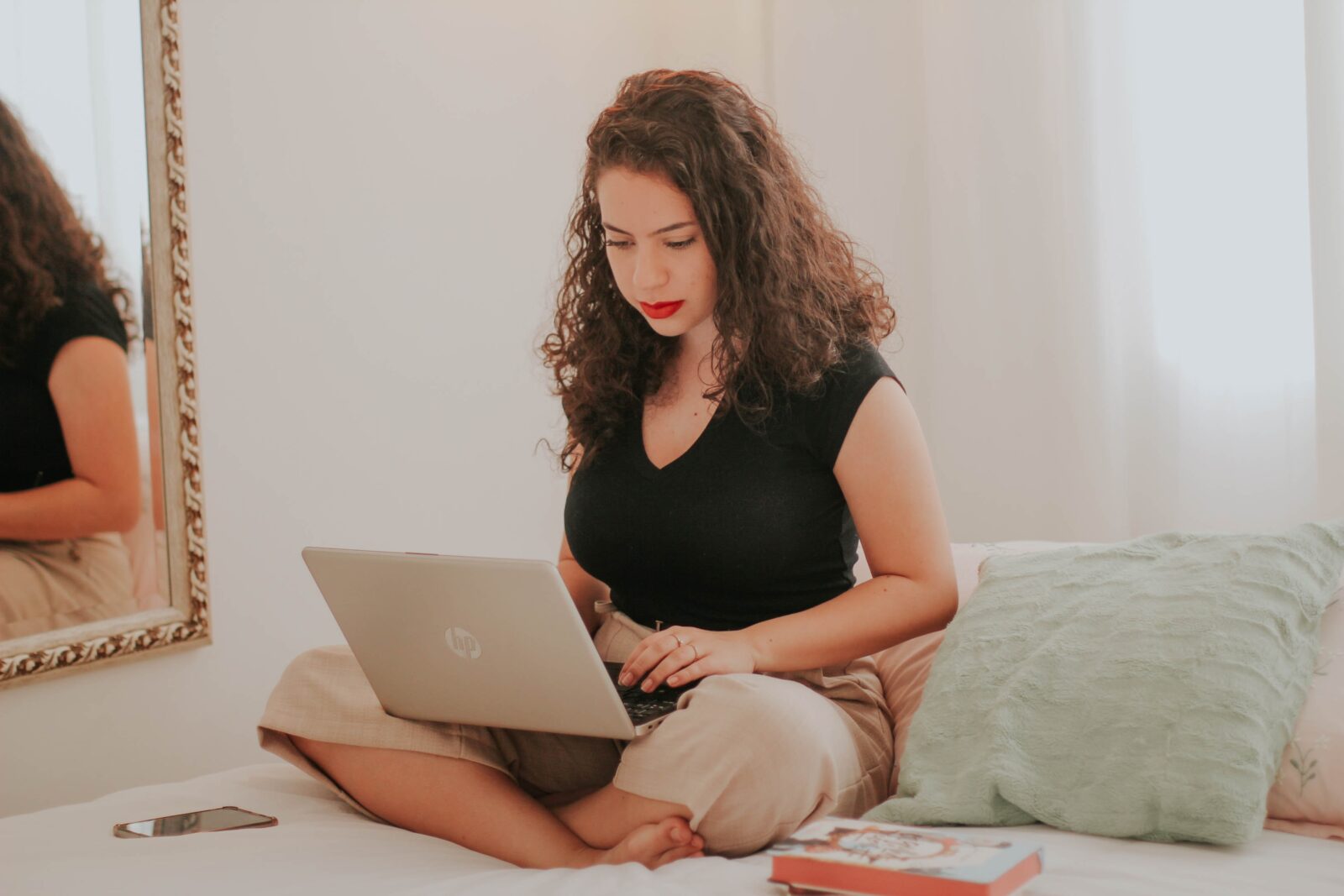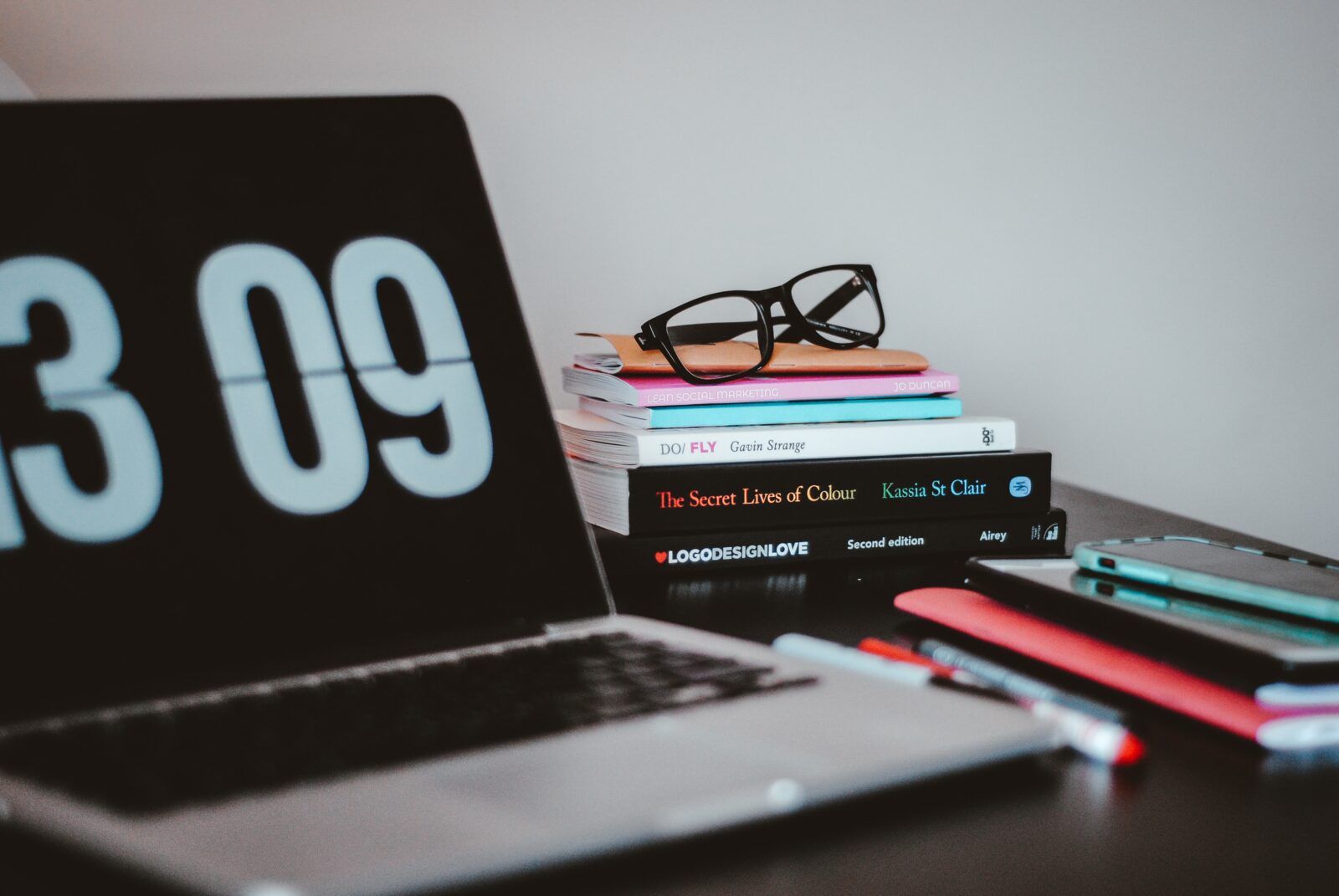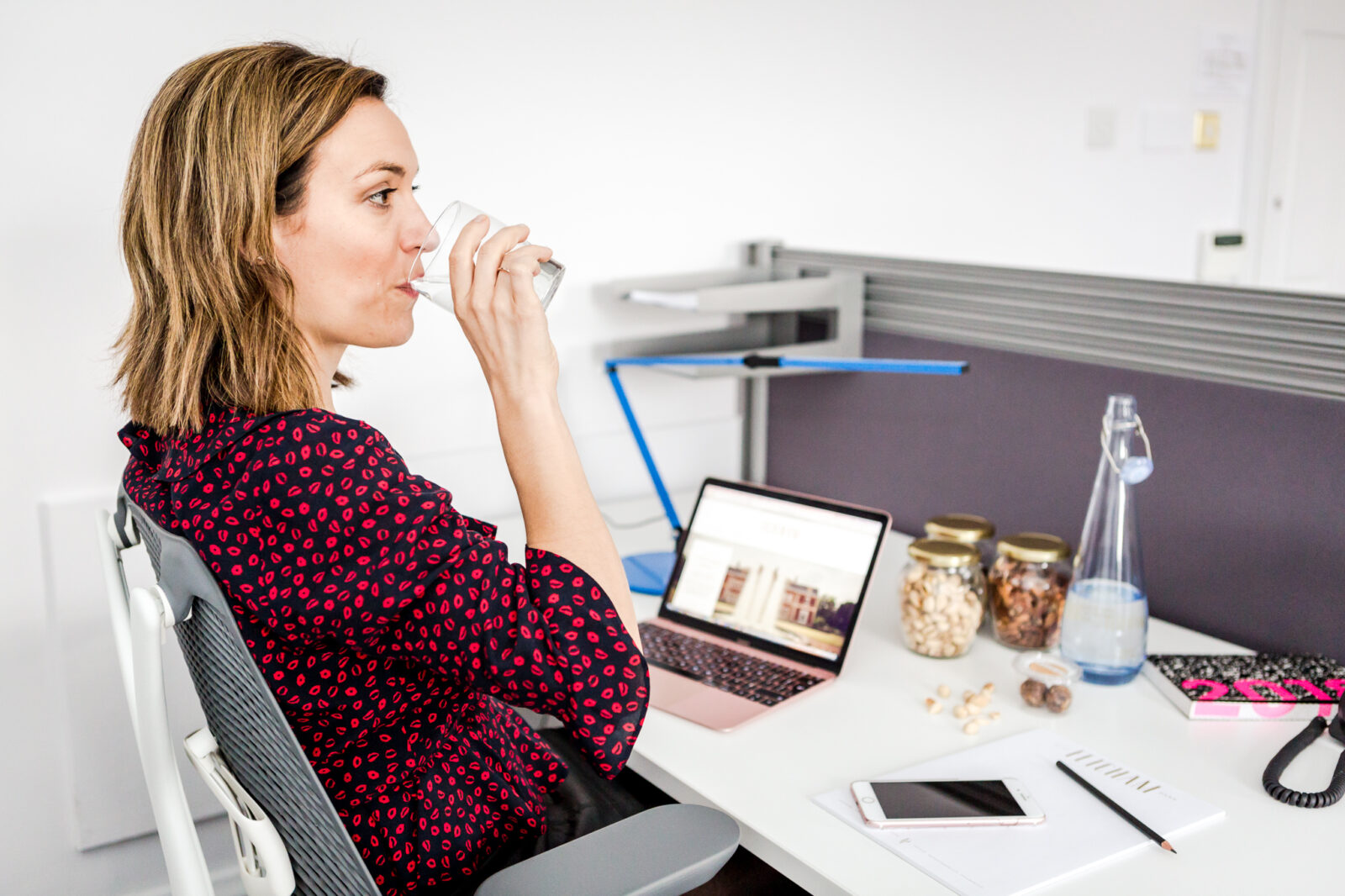Working from home posture pain? Ask the expert with Berna Basson at ReGained Movement
With nearly a year spent working from home at make-shift workstations, the pandemic is playing havoc with posture. It’s a pain in the neck (as well as back, and all over!), caused by more screen time, less movement, and plenty of bad habits.
But it’s not just the physical strains causing damage. Anxiety and stress caused by worry and uncertainty is resulting in hidden inflammation, threatening the nervous and immune systems.
The good news is there are easy ways to make a big improvement. Movement therapist, Berna Basson at ReGained Movement, is a functional Pilates (Active IQ Level 3 diploma) and Applied Yoga teacher, and an NKT therapist. She holds 1:1 therapy sessions twice a week from her office here at Fetcham Park and teaches group classes at the Little Bookham Village Hall and currently via Zoom (until the Hall reopens).
In our latest Ask the Expert feature, Berna shares her insight into the potential posture and pain issues caused by working from home and what can be done to help.
Working from home: the physical problem
We may look back at this pandemic, one day, and see just how many of us have suffered physical issues as a result.
I see a few factors that will have a major impact as a result of the pandemic and working from home more often. Some of these factors overlap but calling each by name brings the essential issues to mind:
- Longer hours at a poor work set-up like desk / table / chair that is not purpose built or optimal
- More overall screen time – break time = phone time
- Less movement – Fewer positions and postures & less overall movement in miles (like not getting out and exercise)
- An even more sedentary lifestyle
- Work-life collision
The effects on our bodies of too much sitting and working on computers are tight shoulders, necks and low backs as well as tight hips and ankles that lead to knee pain. Painful wrists, elbows and shoulders are more often related to repetitive movements. The good news is that these effects are reversible with exercise and, in some stubborn cases, more effectively with NeuroKinetic Therapy!
The lack of global movement (walking, running, cycling, etc) affects your cardiovascular health and very often your weight too – an effect that is largely invisible until you find out you have high cholesterol, high blood pressure and not enough breath to do normal things! A combination of a good diet and cardiovascular exercise can help you out with these issues.
Longer hours at a poor work set-up
Working from home temporarily or unexpectedly may mean that you do not necessarily have an ergonomic work set-up to work from, like you would at a serviced office like Fetcham Park, for example.
Your table might be too high, your chair too low or you may simply not have an office and need to make use of a space that is not purpose built. Add to this problem a poor posture to start with and you have a certain outcome of tightness and pain.
More overall screen time
This is not exclusively a Lockdown problem but is amplified now that we spend more time at home. We think we are taking a break but then we go on our phones! I am no doubt guilty here too. We are almost expected to answer emails and text messages real time.
We are already seeing the effects of a life on screens in our young people and also they are spending more time indoors. I fear for the postures of our growing children. They are likely, on average, more hunched and carry their heads forward at a younger age. I see this also in the toes of (young) people – toes that are becoming hammer toe-like due to over-gripping which points directly to a poor core.
The picture below gives us a good idea of just how heavy the head is and how much heavier it becomes when tilting forward. Our 12lb head more than doubles in weight from only a 15˚ forward head position. Compare that to the weight of an average new-born which is 7.5lb and you may understand why your back hurts – it’s from carrying a new-born twin around your neck!
Less movement
We develop tightness where there is repeated force or strain in the body. If you walk around with your belly always pulled in, your shoulders always pulled back and your low back always in its optimal position, you are bound to develop tightness just like someone who sits all day long in a forward head posture (which is typical of those who work all day on a computer). We are supposed to squat (and low down!), lunge, bend, extend, stand on one leg (which you basically do when you walk), sway our hips and swing our arms to mention but a few essential movements.
Fewer positions and postures
From a work perspective, sitting (or standing!) in the same position all of the time at a poor work set-up is bound to cause trouble in any instance but working from home can exaggerate the effect. Having reasons to get up from your chair is a great way to change position. In the office you may:
- get up to consult a colleague: you squat to get up to standing and then you walk
- go to a meeting: as above but now you sit on a different chair, likely with your elbows on the table and you may slouch into a different position and actually turn you head to see your colleagues and then lean back in your chair when you like.
None of this happens at the moment because everything happens on your computer while you are seated in the same spot all day long.
It is a better strategy for all of us to sit upright at times and to lean back in our chairs at other times or to switch between sitting and standing or to change from one chair to another or perhaps to a Swiss ball (which is great for training core stability, by the way!).
If your work allows, it is good to sit on the floor on the occasion or to lie on your belly (propped onto your elbows) to read a document, for example. Changing position helps us not to always strain through the same places in our bodies.
Standing desks are becoming more popular, although, a word of caution. Standing all the time especially if you already have a compromised posture, has exactly the same effect as sitting poorly all the time.
Less overall movement or miles
There is also the possibility that, if you are not disciplined enough to go for walks, that people do not move enough when they work from home. Going to work means that we actually have to move ourselves to get there (even if you are getting the train or sit in your car for part of it), we attend meetings, consult our colleagues at their desks and we may nip out to the shops for lunch.
Some people admit that their travel time became work time and that they forget to take breaks or simply do not want to be ‘caught not working’. Movement is essential – walking especially. We have to get those chairs off our bottoms!
An increased sedentary lifestyle
Working from home during Lockdown further increased our already sedentary lifestyle. We are now full-on stuck at home and, unless you have a very special job (like mine!), you spend most of your workday seated, on a chair, even when you don’t work.
When we want to socialise, we likely do that….guess what, seated, on WhatsApp, FaceTime, Zoom, Messenger, etc. When we shop, we sit some more especially if you have a grocery delivery slot set up. We no longer take children to school or walk to the bank or visit our local café for a coffee break – we all sit a little longer and more often. It is vital that we arrange to walk with a friend, spouse, partner, child, etc at least a number of times a week.
Work and personal life collision
A big issue working from home is that we cannot escape from work in the same way we could when we left the office and shut the door behind us. We are likely less able to shift the anxiety of work and may even work more as a result – hoping to alleviate the feeling of anxiety by trying to sort things out while it is there, under our noses, all the time.
The lack of separation between work and personal life means we never really relax naturally. Anxiety is not only a mental issue. It affects the body too.
Shallow breathing affects the muscles in the neck and shoulders and a poor functioning diaphragm can literally affect your entire body by inhibiting your core muscles. This is something I see a lot of in my 1:1 therapy sessions and it takes a while to reverse the effects of poor breathing mechanics.
Common bad habits people adopt when working from home
- Sitting at the dining table or breakfast counter, or worse, in your bed to work rather than your study
- Taking a break but then go on our phones – more screens!
- Not changing into our day clothes because our pyjamas are so comfortable
- Not taking your break because what else will you do
- Not ending your workday because you can get back to your work after dinner, which is just here, next to you on the table.
We all need to put in more effort to create work time and personal time and here I am very guilty because some of my worktime is in the evening…It is better for our mental and physical health to maintain the same routines as when we go to work but also then, when we leave work.
How can Pilates help with this?
The position in which we sit at a computer is similar to the fight and flight posture. Relaxation is the opposite – arms overhead, back arched and shoulders open and a biiiiig sigh or stretch. Pilates is the in between posture – the place where your body is in an optimal position so that your lower back is protected.
Pilates and Yoga (if correctly taught) give us awareness of our bodies and can identify problems we have with movement. I look at how you move and try to identify which movements you have lost along the way of life.
Many office workers lose the ability to activate their lower backs because their multifidus became inhibited due to hours of sitting. If not used, the multifidus can turn into fatty matter which has been observed in dissecting cadavers who had a history of low back pain. The loss of multifidus activation is why people develop ‘bulging’ discs and herniated discs when they pick up something too heavy. By the way, we all may have bulging discs a part of the aging process. It doesn’t necessarily cause you pain.
The core muscles are essentially the diaphragm, transversus abdominals, pelvic floor and multifidus. All these muscles (together with the internal obliques) are required to help us build intra-abdominal pressure which is what helps us protect our lumbar / lower backs.
The most essential core muscles do not really bring about movement. The multifidus helps with the lower back hollowing or arching and a bit of rotation but for the rest these muscles cannot be ‘exercised with movement’.
The best way to exercise these muscles (like in Pilates) is to put the body in a ‘neutral spine’ and then to move the limbs in order to challenge the core muscles to activate and maintain the neutral spine. Once you improve, the exercises can be extended to help you further strengthen the core and to build stamina.
The pelvic tilt is the most basic and essential movement to sustain a healthy spine. Tilting your pelvic girdle forward and backward is essentially all this entails. Reality is that you should be able to do BOTH these movements but spending all your time in one or the other is not helpful.
The picture below is a very simplified way of looking at three seated postures. The middle picture is of an anterior or forward hip tilt and the third is of a posterior or backwards hip tilt.
Thea first of the two images below is from Joyful Health and shows the typical neck of someone who works on a desktop-like computer. The second image from Wikipedia is the typical neck posture of someone who spends too much time looking on a phone:
Do you want to know if you have a forward head posture? Stand against a wall with your heels an inch away from the skirting board, your bottom and shoulder blades touching the wall. Are you able to place the back of your head comfortably against the wall while keeping your chin tucked into your throat? If you have to strain to achieve this, or your shoulders or bottom come away from the wall, you have a forward head posture. I suggest you take up Pilates to reverse this.
What are the most common issues you have seen from people who attend your classes and are these related to long hours sitting etc.?
Most people join Pilates because of lower back pain and this is certainly because of long hours sitting. I see tightness and/or pain in the neck, shoulders, lower back, knee, hip and foot. One thing all these issues have in common, is faulty movement or compensation patterns. Even if you live life perfectly you are most likely going to have some faulty mechanics.
Pain is simply a signal that you need to stop doing what you are doing. So, if you stop sitting in a dysfunctional way (easier said than done!) the pain should essentially go away, but the problem with pain is that it arrives last at the Party of Dysfunction and is unfortunately also the last to leave despite the party being over. This is a real dilemma for us as therapists. People believe they are broken because they are in pain which further cements the pain into their nervous system while it is simply a signal that is still existing but with no real use. To cut a long story short, the representation of our body parts in the brain is proportional to its use and not its size. Our fingers take up a huuuuuge piece of the map, for example. It is therefore possible that if your lower back is under strain all day long, that your lower back map is becoming proportionally much bigger in your brain. No wonder then your pain is always present…
How often should we practice Pilates?
If you want to see quick results, start off with 2 classes a week. It will be great if you can sustain this but if not, change to once a week as soon as you start seeing changes happen. More sessions is not necessarily better but ‘better is better’, meaning that it is all about alignment in Pilates to rebalance your muscle imbalances.
Essential moves
The most essential floor movements / exercises are:
- pelvic tilts
- hip rolls
- supine opposite arm and leg
- the shoulder bridge
- the dart
- quadruped and/or prone opposite arm and leg.
About Berna Basson

Berna’s early career in The Netherlands as a management consultant in the .com era meant gruelling hours behind a computer. But it wasn’t until a move to the UK and becoming a mother, that childhood inflammatory issues re-emerged and plagued her with pain. Walking the children to school was killing her knees and lower back and she developed a stiff, immobile shoulder from all the repetitive mummy jobs, like fitting seatbelts from the front seat! A chiropractor encouraged her to attend Pilates and within 4 months her shoulder had healed, and without any additional effort, her knee and back pain vanished! This started a long journey of studying anatomy, movement and a whole host of courses. Her interest is in the most essential movements of the human body – those movements that, once lost through injury, poor posture, operations, etc. cause tightness and often pain. Through observing her clients move she aims to identify the lost movement and retrain that to the body.
For more info follow Berna on Instagram @regained_movement
 01372 371 000
01372 371 000









